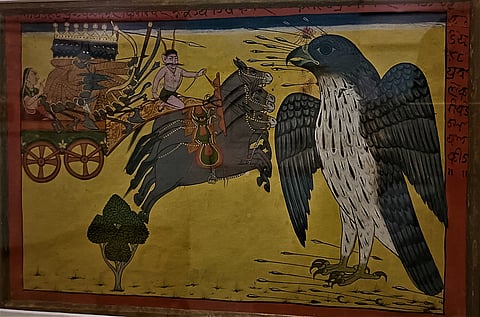Book Excerpt: The immortal story of Ram from an environmental lens
Originating in India, the Ramayana is compelling epic literature for its poetry attributed first to Valmiki (c. fourth century bce) and all subsequent versions respond to new contexts across the geographical regions where storytellers travelled. The Ramayana was told and sung in regional dialects and languages by itinerant storytellers travelling across India. Festivals created infrastructures for pageants, at rituals in temples and in homes for celebrations, and the story was spread with interpolations. It also travelled across the seas with tradesmen and craftsmen to Southeast Asia. The Ramayana offers a complex matrix of statecraft, relationships between parents, siblings, men and women through its predominantly linear narrative. Significantly, more than in any other epic, the relationship between humans, animals and plants in the forest is very marked in my exploration of the Ramayana. Thus, it is the epic that travelled across land and sea, as metaphor and with migrants. In The Living Legend, every being is connected, sustaining the equilibrium of love as life between conflicting forces.
Humans are not the superior species. We see this with the counsel of Hanuman who is the erudite and wise vanara chief minister advising Rama in exile. Rakshasa-asura-demons are not homogeneously inclined towards heinous crimes as we see with the dedication of Vibhishana. The prosperity and sophistication of Ravana is mesmerizing. It is his uncontrollable desires that make him deviate from being an esteemed leader; his tragic flaw—greed.
…
I have enjoyed bringing to the fore the emphasis on the environment, not as a trend but as a unique dimension in the Ramayana, establishing a relationship with nature.
Too often, we have been caught by the internal drama of the characters, but the living and legendary quality of the stories here is their ability to explain the dependence and interrelations between animal forces and plant forces. The forces that come together to accomplish the release of Sita from captivity, the herb Sanjivini, the armies of monkeys, bears, turtles, even squirrels, building the bridge across the ocean from coast to coast.
The rishis were advisers to kings, and some were kings who gave up their kingdom to become rishis. The stories bring together their observations of the ecosystem and eyewitness accounts of changes in the bend of the river, migratory patterns of birds, spawning sanctuaries within the forest, and the emergence of elements creating imbalances in clouds and rain. Today, we understand it as data and analysis and brand it as climate change. It was everyone’s responsibility to treat the environment with respect, a code of behaviour that made a kingdom prosperous by its harvests, ensuring the elements were worshipped, fulfilling the rituals with fire and culminating in feeding the ancestors, community and progeny—past, present and future. The fire sacrifices (or performing yagnas) were worshipful due to the interconnectedness of the elements, earth, sentient beings, communities, and the individual as a heterogenous yet cumulative part of the Self.
The pivot and advent to the making of Rama is the invitation to Dandaka forest; a metaphoric space we enter with him, where his quest is pure. He faces his fear and with his beating heart seeks the light that reveals the truth of the oneness of multiple voices.
At the centre is a beating heart of connectivity, the heartbeat of all living beings. The connectivity has a biological manifestation. All living beings have cells, each cell has mitochondria that is the energy source for the development of the body—plants, animals and humans. Even as we all share this, we are mutating to evolve. It is in this sense of connectedness in all living beings that we understand that our diversities in all forms unite and are experienced as an amalgam of one. This includes backstories, past lives and the different worlds of gods, demons, humans and animals. The focus is on the interconnectedness of the non-linear entities, in circles, spirals and all trajectories possible, converging at one point. That is how this is a living epic celebrated during Deepavali, releasing people who listen from fear, anxiety, pride, jealousy and negative energies, while endorsing positive energies of courage, humility, hard work and generosity, which makes it a living legend (or immortal).
Excerpted with permission from The Living Legend: Ramayana Tales from Far and Near by Vayu Naidu @2024PenguinRandomHouse

